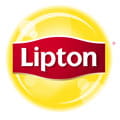Dairy Products: Milk, Yogurt and Cheese

AHA Recommendation
For adults and children age 2 and older, use milk that's low in dairy fats. This includes fortified fat-free milk, fortified fat-free milk powder, and 1% and 2% low-fat milk. Fat-free and 1% fat milk provide slightly more nutrients than whole milk and 2% fat milk and are much lower in fat, saturated fat, cholesterol and calories.
For adults: two to three servings of fat-free or low-fat dairy products daily. For children, two to two and a half servings a day. For teenagers and older adults, three servings each day.
Choose:
- Fat-free milk.
- 1% low-fat milk.
- Fat-free or low-fat dry milk powder.
- Evaporated fat-free milk.
- Buttermilk made from fat-free or 1% fat milk.
- Plain fat-free or low-fat yogurt.
- Frozen fat-free or low-fat yogurt.
- Drinks made with fat-free or 1% fat milk and cocoa (or other low-fat drink powders).
- Low-fat cheeses (dry-curd or low-fat, cottage cheese, low-fat natural cheeses or processed cheeses made with fat-free or low-fat milk with no more than 3 grams of fat per ounce and no more than 1 gram of saturated fat per ounce).
- For plant-based milk alternatives, choose products that have been fortified with vitamins A and D, such as oat, soy or almond milk.
- Fat-free or low-fat ice cream (no more than 3 grams of fat per 1/2 cup serving).
Avoid:
- Whole milk.
- Full-fat cheeses, yogurt and ice cream.
- Milk substitutes that contain coconut oil, palm oil or palm kernel oil. These oils are very high in saturated fats. Saturated fats tend to raise the level of LDL-C cholesterol in the blood. High LDL-C cholesterol is one of the six major risk factors for heart disease that can be changed, treated or modified. It can also lead to developing other heart and blood vessel diseases.
Tip: If you're used to whole-milk products (3.5% fat), you may find it easier to make the change slowly and gradually. For example, try 2% low-fat milk first, then change to 1% low-fat milk. This may help ease the transition to fat-free milk with the gradual changes in taste and texture.
Note: The servings per day of milk products are higher to reflect revised recommendations for calcium intake — 1,000 milligrams for all adults until age 50; 1,200 milligrams at age 50 and older. For vitamin D, the revised recommendations are 600 I.U.s (international units) for everyone age 51 and older; 800 I.U.s for age 71 and older.








